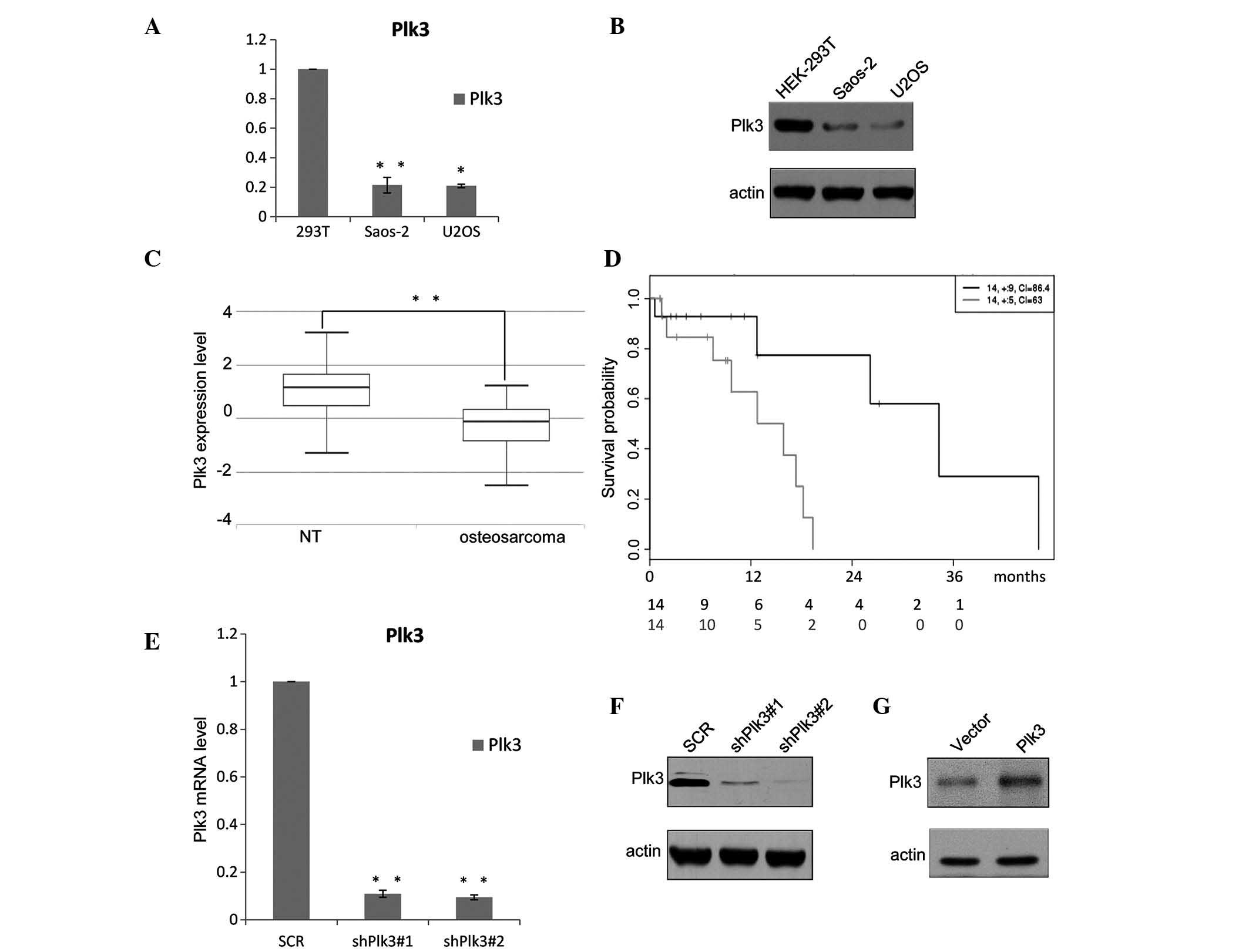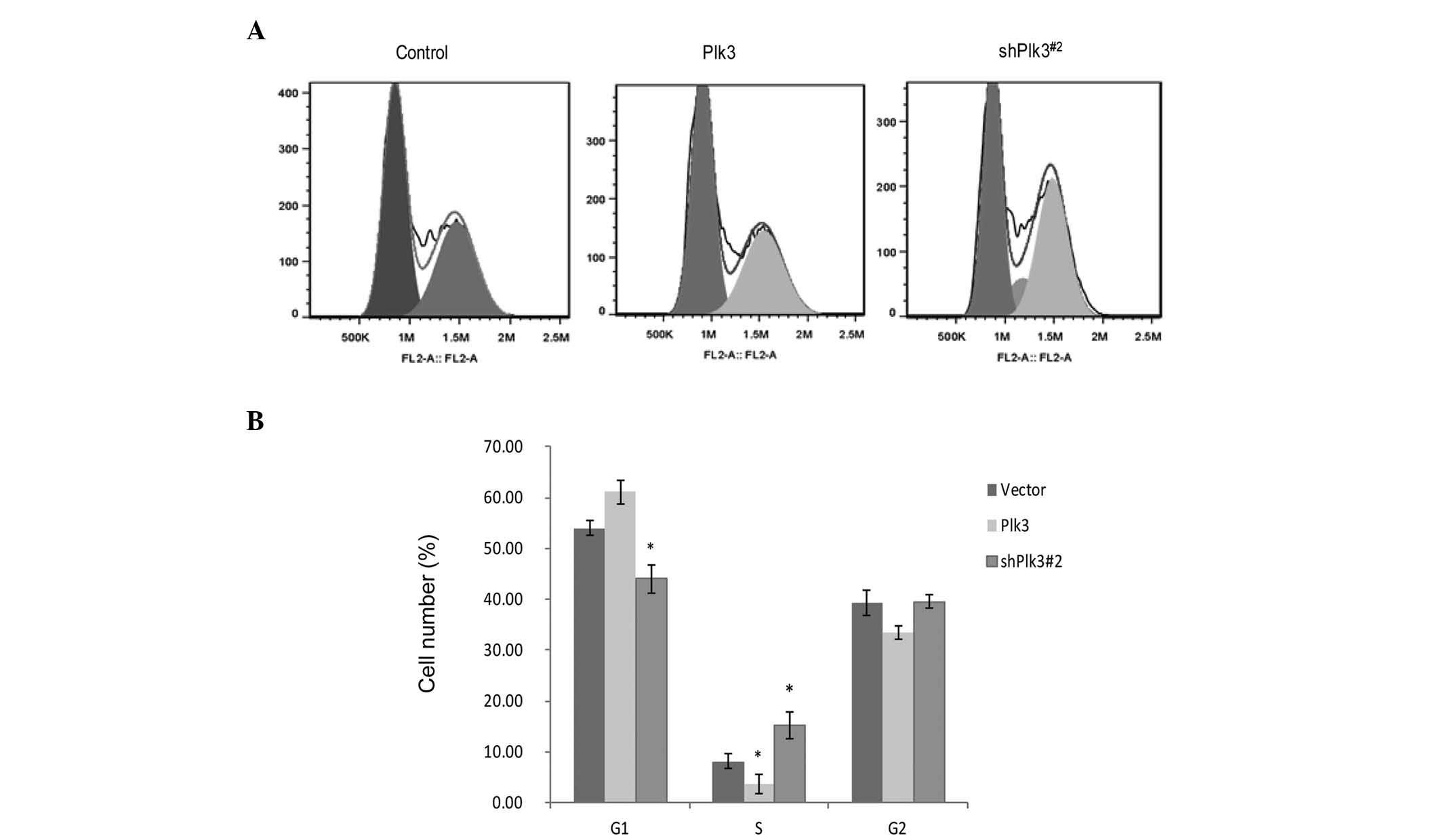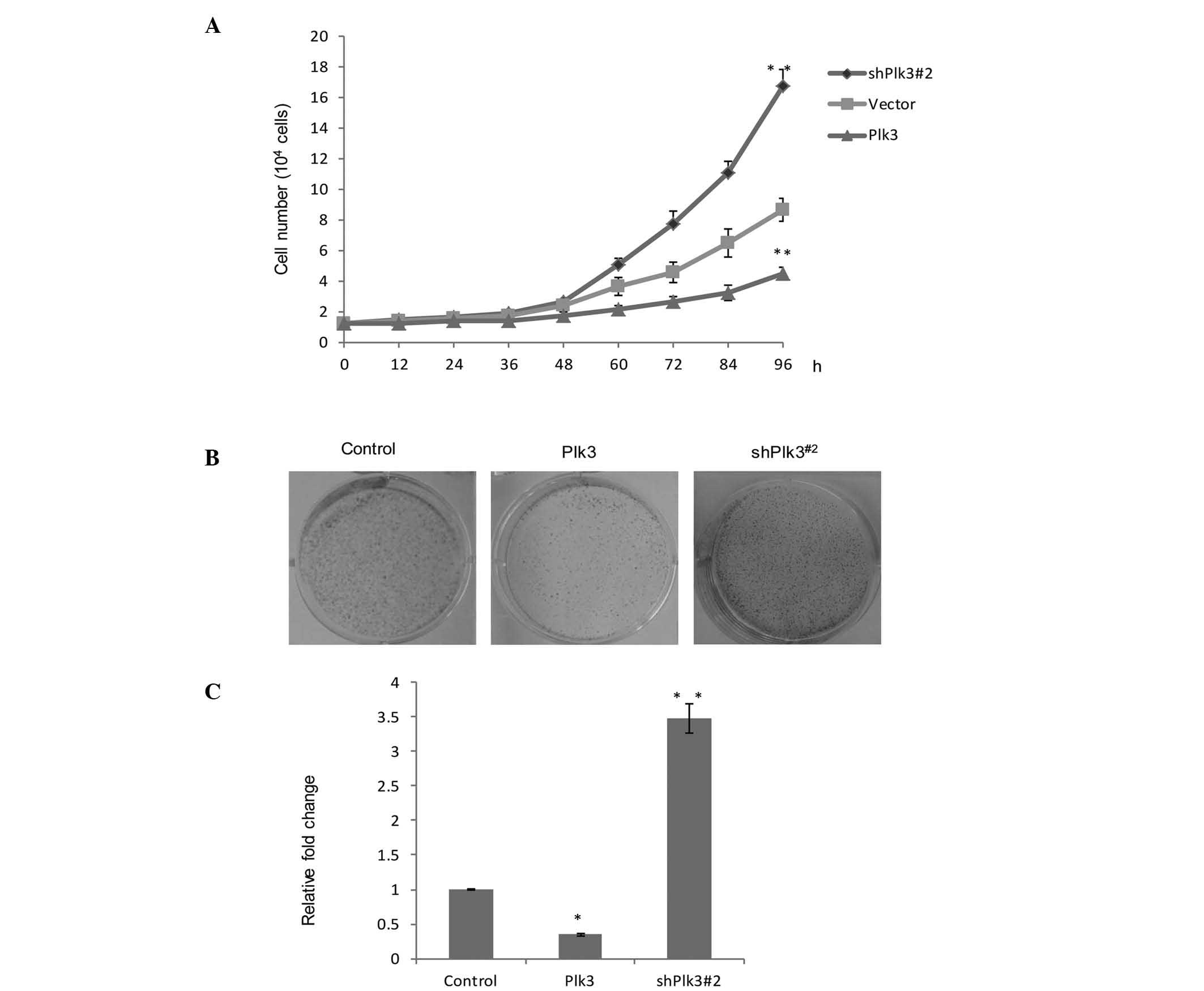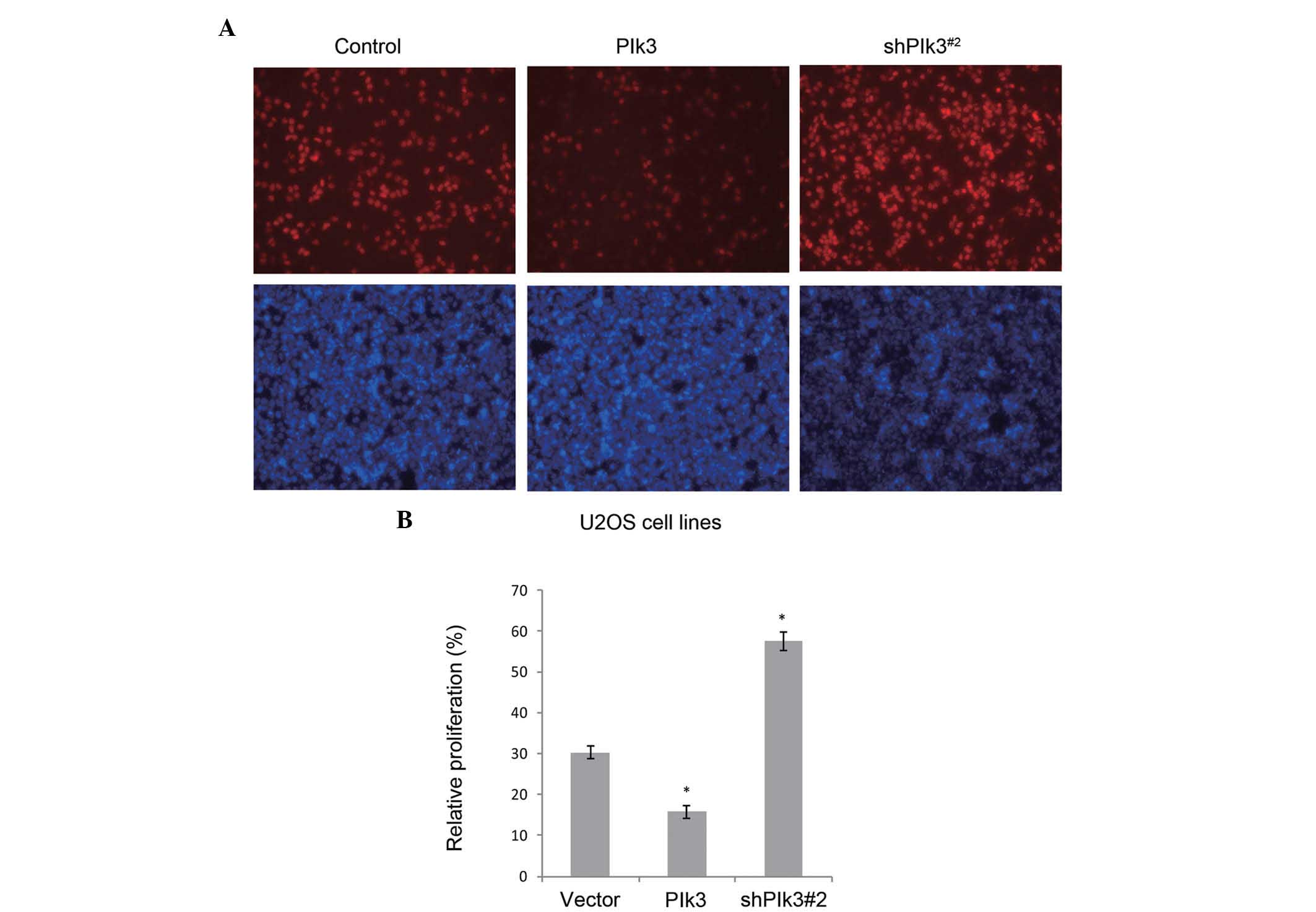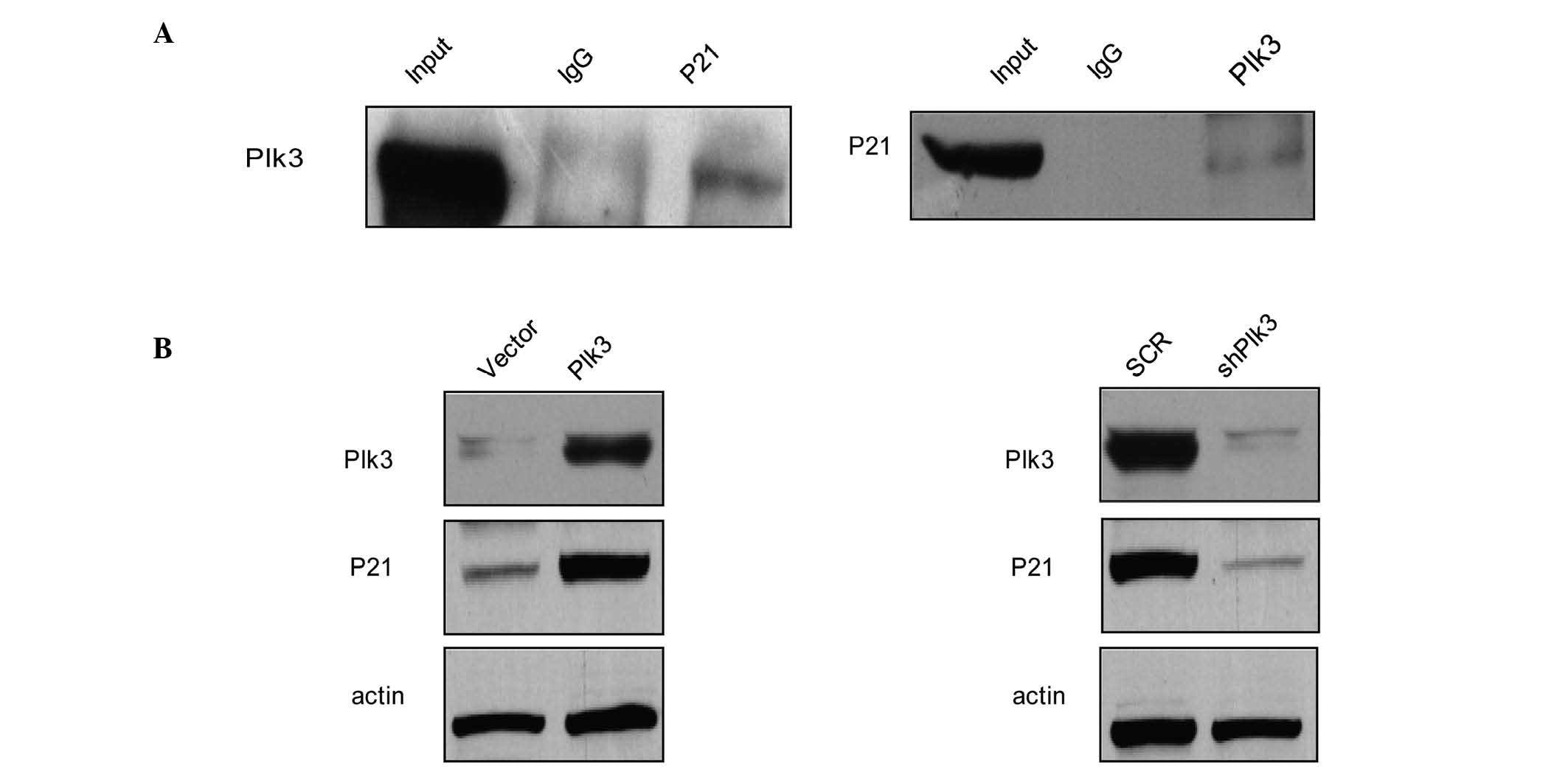|
1
|
Mirabello L, Troisi RJ and Savage SA:
Osteosarcoma incidence and survival rates from 1973 to 2004: Data
from the surveillance, epidemiology and end results program.
Cancer. 115:1531–1543. 2009. View Article : Google Scholar : PubMed/NCBI
|
|
2
|
Marina N, Gebhardt M, Teot L and Gorlick
R: Biology and therapeutic advances for pediatric osteosarcoma.
Oncologist. 9:422–441. 2004. View Article : Google Scholar : PubMed/NCBI
|
|
3
|
Takeshita H, Gebhardt MC, Springfield DS,
Kusuzaki K and Mankin HJ: Experimental models for the study of drug
resistance in osteosarcoma: P-glycoprotein-positive, murine
osteosarcoma cell lines. J Bone Joint Surg Am. 78:366–375.
1996.PubMed/NCBI
|
|
4
|
Lin PP, Pandey MK, Jin F, Raymond AK,
Akiyama H and Lozano G: Targeted mutation of p53 and Rb in
mesenchymal cells of the limb bud produces sarcomas in mice.
Carcinogenesis. 30:1789–1795. 2009. View Article : Google Scholar : PubMed/NCBI
|
|
5
|
Rubio R, Gutierrez-Aranda I, Sáez-Castillo
AI, Labarga A, Rosu-Myles M, Gonzalez-Garcia S, Toribio Ml,
Menendez P and Rodriguez R: The differentiation stage of
p53-Rb-deficient bone marrow mesenchymal stem cells imposes the
phenotype of in vivo sarcoma development. Oncogene. 32:4970–4980.
2013. View Article : Google Scholar
|
|
6
|
Sosa-Garcia B, Gunduz V, Vázquez-Rivera V,
Cress WD, Wright G, Bian H, Hinds PW and Santiago-Cardona PG: A
role for the retinoblastoma protein as a regulator of mouse
osteoblast cell adhesion: Implications for osteogenesis and
osteosarcoma formation. PLoS One. 5:e139542010. View Article : Google Scholar : PubMed/NCBI
|
|
7
|
Shen H and Maki CG: p53 and p21(Waf1) are
recruited to distinct PMl-containing nuclear foci in irradiated and
Nutlin-3a-treated U2OS cells. J Cell Biochem. 111:1280–1290. 2010.
View Article : Google Scholar : PubMed/NCBI
|
|
8
|
Lossaint G, Besnard E, Fisher D, Piette J
and Dulic V: Chk1 is dispensable for G2 arrest in response to
sustained DNA damage when the ATM/p53/p21 pathway is functional.
Oncogene. 30:4261–4274. 2011. View Article : Google Scholar : PubMed/NCBI
|
|
9
|
Xu J, Yao Q, Hou Y, Xu M, Liu S, Yang L,
Zhang L and Xu H: MiR-223/Ect2/p21 signaling regulates osteosarcoma
cell cycle progression and proliferation. Biomed Pharmacother.
67:381–386. 2013. View Article : Google Scholar : PubMed/NCBI
|
|
10
|
Cmielová J and Rezáčová M: p21Cip1/Waf1
protein and its function based on a subcellular localization
[corrected]. J Cell Biochem. 112:3502–3506. 2011. View Article : Google Scholar
|
|
11
|
Matsumoto T, Sowa Y, Ohtani-Fujita N,
Tamaki T, Takenaka T, Kuribayashi K and Sakai T: p53-independent
induction of WAF1/Cip1 is correlated with osteoblastic
differentiation by vitamin D3. Cancer Lett. 129:61–68. 1998.
View Article : Google Scholar : PubMed/NCBI
|
|
12
|
Gartel AL, Serfas MS and Tyner AL:
p21-negative regulator of the cell cycle. Proc Soc Exp Biol Med.
213:138–149. 1996. View Article : Google Scholar : PubMed/NCBI
|
|
13
|
Abbas T and Dutta A: p21 in cancer:
Intricate networks and multiple activities. Nat Rev Cancer.
9:400–414. 2009. View
Article : Google Scholar : PubMed/NCBI
|
|
14
|
Harper JW, Adami GR, Wei N, Keyomarsi K
and Elledge SJ: The p21 Cdk-interacting protein Cip1 is a potent
inhibitor of G1 cyclin-dependent kinases. Cell. 75:805–816. 1993.
View Article : Google Scholar : PubMed/NCBI
|
|
15
|
Dulić V, Kaufmann WK, Wilson SJ, Tlsty TD,
Lees E, Harper JW, Elledge SJ and Reed SI: p53-dependent inhibition
of cyclin-dependent kinase activities in human fibroblasts during
radiation-induced G1 arrest. Cell. 76:1013–1023. 1994. View Article : Google Scholar
|
|
16
|
Ando T, Kawabe T, Ohara H, Ducommun B,
Itoh M and Okamoto T: Involvement of the interaction between p21
and proliferating cell nuclear antigen for the maintenance of G2/M
rrest after DNA damage. J Biol Chem. 276:42971–42977. 2001.
View Article : Google Scholar : PubMed/NCBI
|
|
17
|
Dash BC and El-Deiry WS: Phosphorylation
of p21 in G2/M promotes cyclin B-Cdc2 kinase activity. Mol Cell
Biol. 25:3364–3387. 2005. View Article : Google Scholar : PubMed/NCBI
|
|
18
|
Martin-Caballero J, Flores JM,
Garcia-Palencia P and Serrano M: Tumor susceptibility of
p21(Waf1/Cip1)-deficient mice. Cancer Res. 61:6234–6238.
2001.PubMed/NCBI
|
|
19
|
Young NP, Crowley D and Jacks T:
Uncoupling cancer mutations reveals critical timing of p53 loss in
sarcomagenesis. Cancer Res. 71:4040–4047. 2011. View Article : Google Scholar : PubMed/NCBI
|
|
20
|
Liu X, Yang WT and Zheng PS: Msi1 promotes
tumor growth and cell proliferation by targeting cell cycle
checkpoint proteins p21, p27 and p53 in cervical carcinomas.
Oncotarget. 5:10870–10885. 2014. View Article : Google Scholar : PubMed/NCBI
|
|
21
|
Luo DH, Zhou Q, Hu SK, et al: Differential
expression of Notch1 intracellular domain and p21 proteins, and
their clinical significance in gastric cancer. Oncol Lett.
7:471–478. 2014.PubMed/NCBI
|
|
22
|
Zhang X, Liu J, Zang D, et al:
Upregulation of miR-572 transcriptionally suppresses SOCS1 and p21
and contributes to human ovarian cancer progression. Oncotarget.
6:15180–15193. 2015. View Article : Google Scholar : PubMed/NCBI
|
|
23
|
Zhang Y, Sturgis EM, Zafereo ME, Wei Q and
Li G: p14ARF genetic polymorphisms and susceptibility to second
primary malignancy in patients with index squamous cell carcinoma
of the head and neck. Cancer. 117:1227–1235. 2011. View Article : Google Scholar : PubMed/NCBI
|
|
24
|
Andrysik Z, Bernstein WZ, Deng L, Myer DL,
Li YQ, Tischfield JA, Stambrook PJ and Bahassi el M: The novel
mouse Polo-like kinase 5 responds to DNA damage and localizes in
the nucleolus. Nucleic Acids Res. 38:2931–2943. 2010. View Article : Google Scholar : PubMed/NCBI
|
|
25
|
Dai W: Polo-like kinases, an introduction.
Oncogene. 24:214–216. 2005. View Article : Google Scholar : PubMed/NCBI
|
|
26
|
Lowery DM, Lim D and Yaffe MB: Structure
and function of Polo-like kinases. Oncogene. 24:248–259. 2005.
View Article : Google Scholar : PubMed/NCBI
|
|
27
|
Fenton B and Glover DM: A conserved
mitotic kinase active at late anaphase-telophase in syncytial
Drosophila embryos. Nature. 363:637–640. 1993. View Article : Google Scholar : PubMed/NCBI
|
|
28
|
Conn CW, Hennigan RF, Dai W, Sanchez Y and
Stambrook PJ: Incomplete cytokinesis and induction of apoptosis by
overexpression of the mammalian polo-like kinase, Plk3. Cancer Res.
60:6826–6831. 2000.
|
|
29
|
Wang Q, Xie S, Chen J, Fukasawa K, Naik U,
Traganos F, Darzynkiewicz Z, Jhanwar-Uniyal M and Dai W: Cell cycle
arrest and apoptosis induced by human Polo-like kinase 3 is
mediated through perturbation of microtubule integrity. Mol Cell
Biol. 22:3450–3459. 2002. View Article : Google Scholar : PubMed/NCBI
|
|
30
|
Yang Y, Bai J, Shen R, Brown SA,
Komissarova E, Huang Y, Jiang N, Alberts GF, Costa M, Lu L, et al:
Polo-like kinase 3 functions as a tumor suppressor and is a
negative regulator of hypoxia-inducible factor-1 alpha under
hypoxic conditions. Cancer Res. 68:4077–4085. 2008. View Article : Google Scholar : PubMed/NCBI
|
|
31
|
Iyoda M, Kasamatsu A, Ishigami T,
Nakashima D, Endo-Sakamoto Y, Ogawara K, Shiiba M, Tanzawa H and
Uzawa K: Epithelial cell transforming sequence 2 in human oral
cancer. PLoS One. 5:e140822010. View Article : Google Scholar : PubMed/NCBI
|
|
32
|
Poletajew S, Fus L and Wasiutyński A:
Current concepts on pathogenesis and biology of metastatic
osteosarcoma tumors. Ortop Traumatol Rehabil. 13:537–545. 2011.In
English and Polish. View Article : Google Scholar
|
|
33
|
Endo-Munoz L, Evdokiou A and Saunders NA:
The role of osteoclasts and tumour-associated macrophages in
osteosarcoma metastasis. Biochim Biophys Acta. 1826:434–442.
2012.PubMed/NCBI
|
|
34
|
Rainusso N, Wang LL and Yustein JT: The
adolescent and young adult with cancer: State of the art-bone
tumors. Curr Oncol Rep. 15:296–307. 2013. View Article : Google Scholar : PubMed/NCBI
|
|
35
|
Gorlick R and Meyers PA: Osteosarcoma
necrosis following chemotherapy: Innate biology versus
treatment-specific. J Pediatr Hematol Oncol. 25:840–841. 2003.
View Article : Google Scholar : PubMed/NCBI
|
|
36
|
Hawkins DS and Arndt CA: Pattern of
disease recurrence and prognostic factors in patients with
osteosarcoma treated with contemporary chemotherapy. Cancer.
98:2447–2456. 2003. View Article : Google Scholar : PubMed/NCBI
|
|
37
|
Klein MJ and Siegal GP: Osteosarcoma:
Anatomic and histologic variants. Am J Clin Pathol. 125:555–581.
2006. View Article : Google Scholar : PubMed/NCBI
|
|
38
|
Hwang CY, Lee C and Kwon KS: Extracellular
signal-regulated kinase 2-dependent phosphorylation induces
cytoplasmic localization and degradation of p21Cip1. Mol Cell Biol.
29:3379–3389. 2009. View Article : Google Scholar : PubMed/NCBI
|
|
39
|
Blagosklonny MV: Are p27 and p21
cytoplasmic oncoproteins? Cell Cycle. 1:391–393. 2002. View Article : Google Scholar
|
|
40
|
Sohn D, Essmann F, Schulze-Osthoff K and
Jänicke RU: p21 blocks irradiation-induced apoptosis downstream of
mitochondria by inhibition of cyclin-dependent kinase-mediated
caspase-9 activation. Cancer Res. 66:11254–11262. 2006. View Article : Google Scholar : PubMed/NCBI
|



